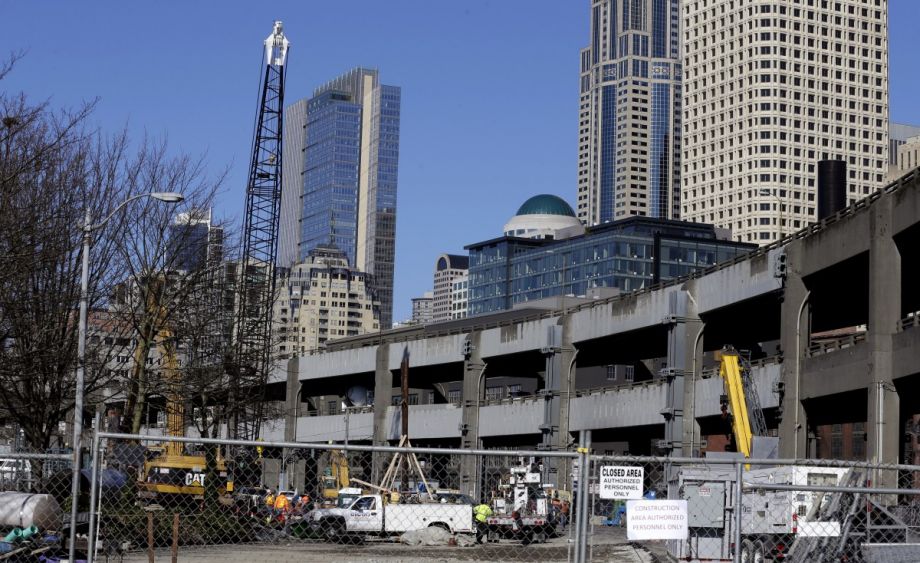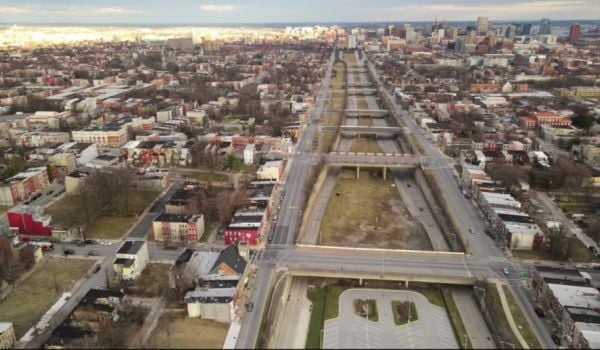Last week, two Republican legislators in Washington State filed a bill attempting to kill the multibillion-dollar highway tunnel currently being dug under downtown Seattle. With the megaproject stalled for all of 2014 due to a now infamous failure of machinery, State Sens. Michael Baumgartner and Doug Eriksen didn’t mince words.
Their bill opens, “The legislature finds that the state route number 99 Alaskan Way viaduct replacement project has failed. The legislature also finds that the project as it is currently designed cannot be justified financially and is not in the best interest of the public.”
Though the bill is couched in good old-fashioned fiscal conservatism and will-of-the-peoplism — “the project has created great anxiety and frustration, and has lost the political support of the people of Seattle, its council, as well as the people of the state and its legislature” — it was likely just a swipe at tunnel devotees such as Governor Jay Inslee and other Democrats up for reelection next year.
Either way, it was short-lived. After the bill was introduced, legislators, Inslee and Seattle Mayor Ed Murray circled the wagons and voiced their continued support for the project. The following day, Senate Transportation Committee Chair Curtis King, a Republican, killed the bill by declaring it would not get a committee hearing.
“While I understand my colleagues’ concerns regarding the Seattle tunnel project, a bill to shut down a project of this size is not realistic,” King said in a press statement.
But though the bill might’ve just been political posturing, Ericksen and Baumgartner are correct. The project IS failing and spectacularly so. That failure — and all the attending disillusionment and political machination — underscores ongoing debates that surround decision-making about infrastructure projects in cities from coast to coast.
For those unfamiliar with Bertha (the broken boring machine) and the Rte. 99 project, here’s the shortest recap I can muster.
Washington State Rte. 99 is a highway running north-south through all of Seattle. In the heart of the city, 99 runs along an elevated, double-decker viaduct that separates the downtown core from the Puget Sound waterfront. A 2001 earthquake severely damaged that viaduct, and even $14.5 million in repairs left the structure, according to researchers, “critically weakened.”
In 2008, then-Gov. Christine Gregoire announced that she would tear down the viaduct by 2012. “I’m not going to fudge on [that timeline]. And if we don’t have some alternative by then, boy are we going to have a mess on our hands because it’s coming down.”
Washington’s DOT put forth three replacement options: rebuild the viaduct, replace it with a massive tunnel under downtown, or replace it with a four-lane surface street with transit improvements. With the blessing of the Seattle residents (sort of), WSDOT and construction contractors Seattle Tunnel Partners (STP) started moving full steam ahead to deliver the incredibly ambitious second option.
Those on the hook for the project tab, estimated at $3.1 billion, include the state and the Port of Seattle. (The City of Seattle paid out nearly $1 billion for waterfront redevelopment, central seawall replacement and utilities relocation; those efforts were separated from the tunnel project.) The state legislature put the city on the hook for any cost overruns.
Most megaprojects have cost overruns and hit unforeseen snags, but this viaduct replacement tunnel was always particularly risky. The tunneling machine — named Bertha after former Seattle Mayor Bertha Knight Landes — is the largest in the world at 57 feet in diameter. The ground’s mix of soft in-fill dirt, rocks and more is troublesome. Coupled with the fact that Bertha wasn’t built with the capability to go in reverse, there’s a good chance of getting stuck.
The machine ran as planned from July 2013 to December 2013, making it about 1,000 feet of its nearly two-mile journey. Then it broke — the reasons for the failure still aren’t clear — and it hasn’t budged in over a year.
WSDOT and STP spent as much time arguing over who’s to blame as they have fixing the problem. On Friday, news arrived that STP has finished digging a 120-foot-deep pit to remove and repair Bertha’s blade. The rescue attempt may have created a crack along a downtown street, and the viaduct (which is still up more than two years after the former governor said it would come down) sank nearly half an inch in some spots. (A WSDOT representative says the cracks predate the project and, “We are still trying to determine what affect project dewatering might have had on S. King Street.”)
So, here we are today with a stuck boring machine, nine-tenths of the tunnel yet to be dug, $2 billion spent, and a political leadership that, at least publicly, still fully supports the project. Whether or not Baumgartner and Eriksen were sincere, there’s certainly merit to the arguments raised by their bill.
Cary Moon is a Seattle citizen activist and former director of the anti-tunnel People’s Waterfront Coalition. Like reporter Dominic Holden, she correctly predicted some of the tunnel’s risks back in 2010. She thinks the recent spate of problems is pushing elected officials to a tipping point.
“We’re two-thirds of the way towards people admitting it’s not working, but we’re not there yet,” Moon says. “Definitive news that viaduct’s not safe to continue using or definitive news from WSDOT or STP that they can’t fix the machine might do it. Right now there’s a vacuum of leadership in terms of what to do about the big problems.”
But she is confident that should more problems arise, politicians will need a plan B.
STP should know within a few months whether or not they can fix the problem and resume tunneling. If they can, they’ve got about 8,000 feet left to tunnel, mostly underneath historic buildings in one of Seattle’s oldest neighborhoods where rescue will be even more difficult should it get stuck again. In other words, some of the riskiest tunneling is yet to come in this already risky project. In the meantime, there is still no public plan B from city or state leaders.
“The public’s very frustrated. They see a disaster happening in slow motion. And they see leadership not stepping up to admit there’s a big problem and identify a way out of it,” says Moon.
Perhaps other cities will look to Bertha and the Big Dig and other megaprojects that run over budget and reconsider plans to be the biggest and boldest. Or they’ll just convince themselves that they’ll be lucky, and move forward full steam ahead.
UPDATE: This article was changed to clarify information about project funding as well as the machine failure, and to add the comment from a WSDOT representative.
The Works is made possible with the support of the Surdna Foundation.

Josh Cohen is Crosscut’s city reporter covering Seattle government, politics and the issues that shape life in the city.
Follow Josh .(JavaScript must be enabled to view this email address)

















